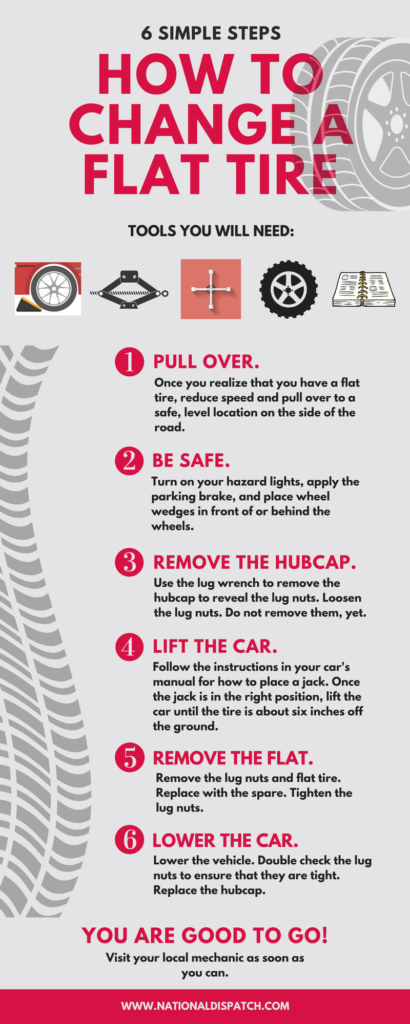Every car owner’s nightmare is a flat tire. Double that if you don’t have a spare tire around, and make it triple when you’re in an emergency. If you’re wondering how many miles you can squeeze on your flat tire. It’s 50 miles or 80.4 kilometers.
However, you should drive slowly on a flat tire since it doesn’t have much traction or durability. Not to mention the potential of an accident when driving with a flat tire damage.
If you still have lingering questions regarding how far can you drive on a flat tire. Read on to learn more.
Table of Contents
If you must drive with a popped tire then make sure that where you’re going is relatively near.
The limit is 50 miles just right after the tire got punctured. However, you must prepare for any potential damage to your car.
However, flat tires shouldn’t be driven long distances. You’ll risk damaging your vehicle more, notably the wheels, brakes, and other parts such as your suspension and steering system.
Damage to these vehicle systems can drastically reduce handling, not to mention repair costs.
It’s tempting to drive a short distance on a flat tire. However, it’s better to drive on a spare tire instead, provided you have one ready.
If you don’t have considerable damage to it, the puncture could potentially be plugged and save you the hassle and money of getting a new one.
Suppose you need to drive a short distance on a flat tire. Just make sure that you’re going slowly.

If you’re asking, “can I drive a flat tire 2 miles?” .5 more than the recommended distance. Technically you can, but you’ll have to be ready for additional vehicle damage.
Furthermore, the most significant scare would be traffic accidents. As your car mishandles, the chances of getting traffic accidents rise exponentially.
One unintentional turn or stoppage when you ride on a flat tire is a one-way ticket to disaster.
Spare tires are essential when you’re driving. Having one can save you the hassle of driving slowly yet dangerously as you go on a flat tire, not to mention that a spare tire is a requirement in most state traffic laws.
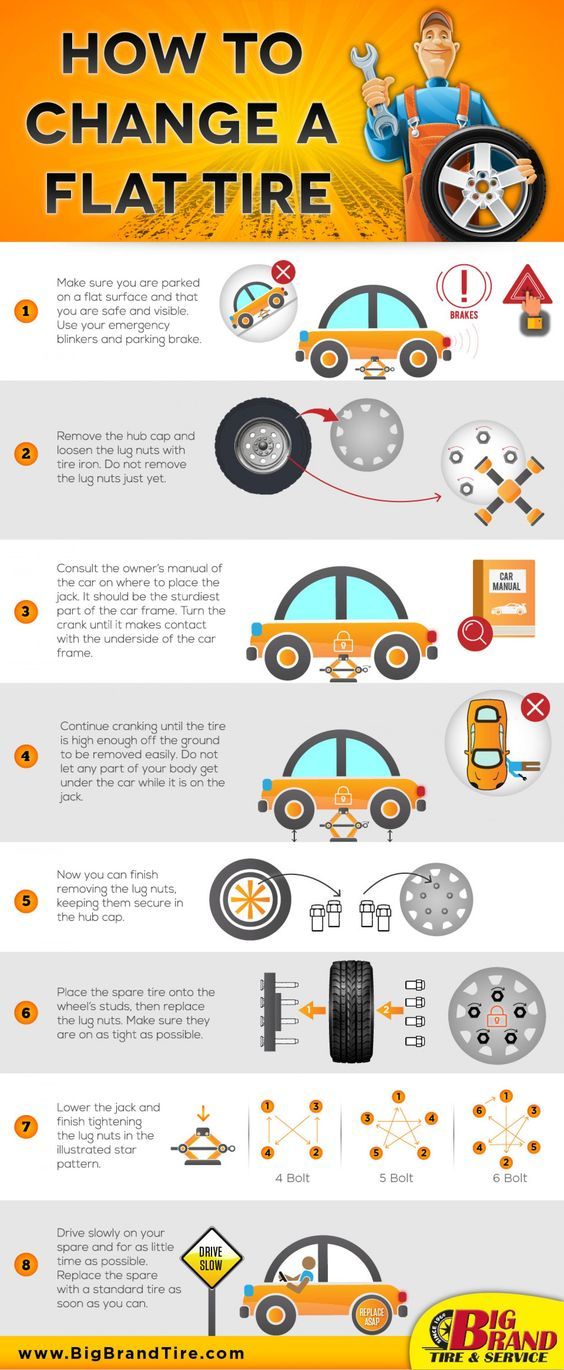
Luckily, this is a lot better than driving on a flat tire. The time and hassle of changing a flat tire are worth it.
Spare tires are, as the name suggests, a spare. When driving with one, ensure you find the right kind of wheels for your car as soon as possible. Not only would this dramatically improve your handling, but you’ll mitigate the risk of popping another tire, this time without a spare.
When replacing a flat tire with a spare, you must follow several steps to ensure safer and more efficient work. These steps apply to your front or rear tire.
Step 1: Make sure you pull over safelyIf you decide to change your tires instead of driving on, pull over on the safe side of the road.
Also, place a warning device to let oncoming traffic know you’re in a dire situation.
Step 2: Make sure you have tools and a spare tireYou’ll need at least three tools when changing a tire on your vehicle.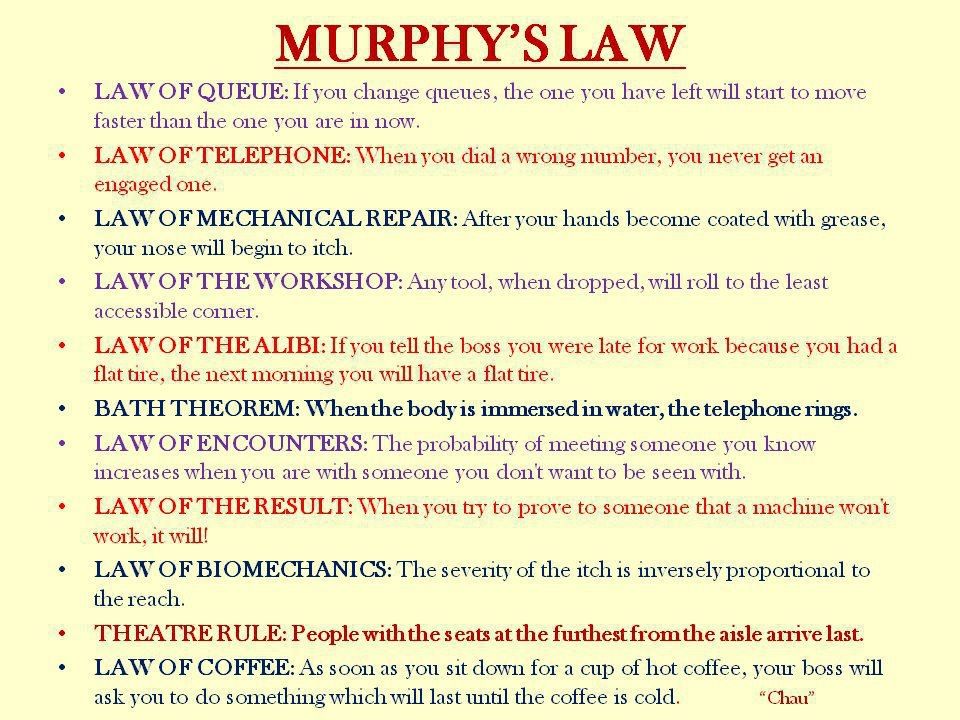
Additional tools can be:
Using a tire iron, loosen each lug nut on your wheels until you can easily turn them manually with your hands.
Step 4: Lift the vehicleRaise your car by placing the jack underneath the metal part of your vehicle. Avoid placing it under the plastic frame.
To best do this step, consider referring to your owner’s manual for additional assistance.
Step 5: Remove the tireCarefully remove your tire by removing the lug nuts. Ensure that the lug nuts are in a safe box. Then, pull the tire towards you to take it out.
Step 6: Place the spare tireCarefully place your spare tire, and using your hands, place the lug nuts, but don’t secure them just yet.
Lower your car and tighten the lug nuts while the tire slowly touches the ground.
Step 8: Ultimately, lower your vehicleLower your car and secure the lug nuts as tight as possible. You’re now ready to drive your vehicle.
I quickly looked through Reddit for some pro tips, and I saw that u/Grosse Fahrt advised that a donut spare can potentially damage the drivetrain if you place it on your drive axle. So a spare full-sized identical wheel is better to keep around.
There are many ways to prevent a flat tire, as prevention is better than cure. However, you must also be ready as even the most vigilant drivers can still have one, mainly due to wear and tear.
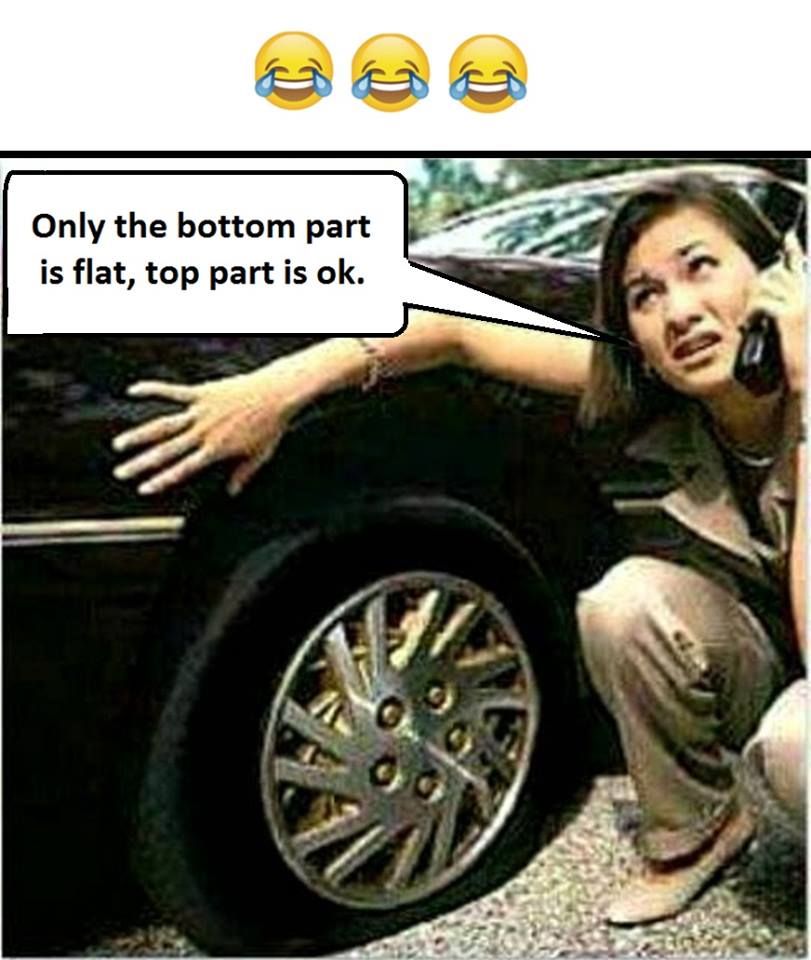
Most of us have driven on a flat tire at some point.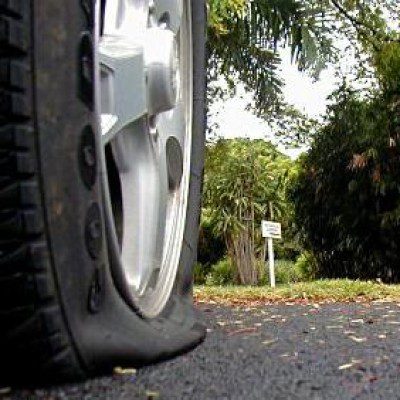 Whether for a short period or longer, driving on a flat tire is never something you want to do.
Whether for a short period or longer, driving on a flat tire is never something you want to do.
Certain factors might cause you to drive with a flat tire, such as lack of spare tire, limited ability to change the tire along the way, etc.
Knowing “how far can you drive on a flat tire” will help you get out of the situation without damaging your vehicle or, most importantly, yourself if you are ever in this position.
Last modified by Ian Haynes
Every year, almost 220 million flat tires happen in the United States alone. This means that the average American will experience five flats or more in their lifetime – and since 20% of U.S. drivers do not know how to change a tire, this could spell trouble.
The only other course of action is to call a friend or get roadside assistance — but they might disappoint you and make you wait for a while.
But sometimes, you run a flat in the most inappropriate of places and help might take hours to arrive – so the only resort left is driving to the nearest workshop on a punctured tire.
However, experts don’t recommend this as it can damage the tire and render it completely useless. The chances are that you’ll never be able to use the tire again.
But if you must, make sure that help is no more than a few yards away and that you keep the speed steady when driving on a flat tire.
Tires either gradually deflate because of punctures or loose valves, or they blow out on-spot – in both scenario’s you need to get your tires back in shape promptly.
Anything below 20 PSI indicates a flat tire. If your TPM shows a PSI that’s dropping fast or if your tire has already blown out, react immediately and change the way your drive.
Make sure you drive no longer than 1.5 miles and go no faster than 20 mph – this is the only way to ensure that your tire has any hopes of surviving this disaster.
Here is a step-by-step guide on quickly making it to the nearest service station:
The rim puts extraordinary pressure on a flat tire when it’s being driven, and this damages the tire’s tread compound significantly. Here are some of the many reasons why it’s a bad call to drive on flat tires:
The Rims Get Damaged
If there is little to no pressure left in the tire, it can no longer shoulder the weight of a moving car, and the rims are left to bear the forces without any support. That’s why driving on a flat tire can be disastrous for tire rims, and you may have to replace them along with the tire once you are done with the drive.
That’s why driving on a flat tire can be disastrous for tire rims, and you may have to replace them along with the tire once you are done with the drive.
It’s Bad For The Car
Driving on a flat tire also harms your car. You may end up with broken brake lines, suspension parts, fenders, and rotors.
It’s Dangerous For You
Above all, a bad tire can compromise the handling and control of vehicles. Also, the disfigured suspension and brake lines may lead to an accident.
You May End Up With An Unusable Tire
If you check the manual for your tires, you’ll find adequate guidance from the manufacturers on what the proper pressure is, and when to change to a spare.
But when you drive on a flat tire, even a small puncture courtesy of damaged roads and stones may aggravate to the point that it won’t be repairable if pushed too far.
Ideally, a one-fourth-inch puncture in diameter on the tread is repairable.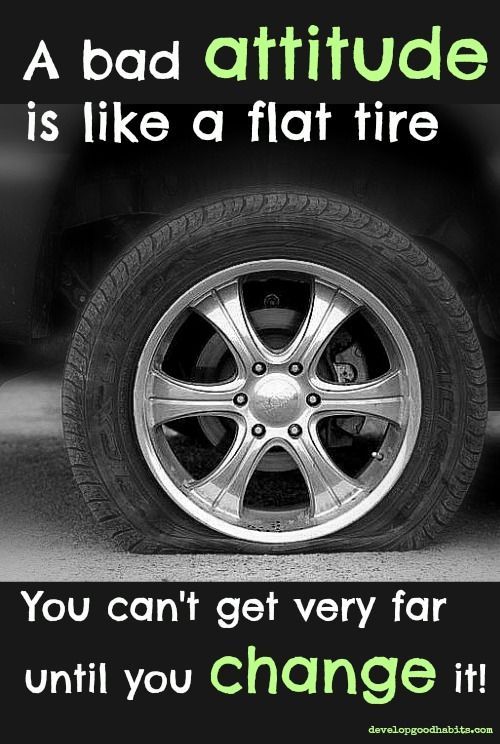 Still, sidewall punctures, internally damaged tires, and tires with massive cuts need to be replaced.
Still, sidewall punctures, internally damaged tires, and tires with massive cuts need to be replaced.
Even though it’s not possible to tell exactly when you’ll get a flat tire, but if you notice that the tire pressure is not on-point, get it fixed ASAP.
Follow these steps to delay flat tires, and use your tires to their full potential:
Buy The Best Quality
Naturally, you should invest in the best tires out there – make sure they are well-suited for your car, as well as local weather for where you live. You have an option between summer tires, winter tires, all-season tires, and the safest and most efficient run-flat tires.
The idea is to have a tire with a quality tread compound, so even if things go south, they can be forced to work harder than average tires.
Run-flat tires are an excellent option if you want to avoid being stranded with a flat tire. These are built with an additional compound that keeps the tires sturdy even when flat, so you can drive on them safely.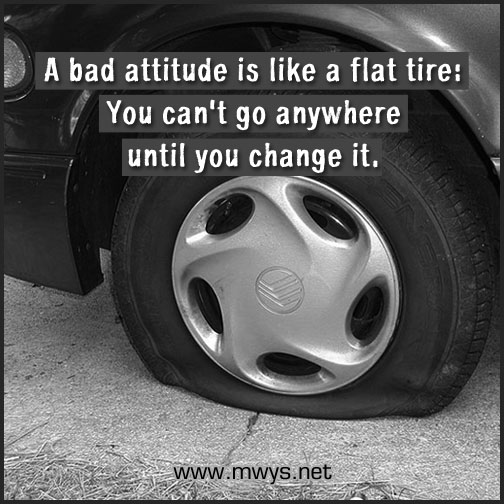
Check Your Tires Before Heading Out
When on the road, tires have to face rocks and potholes and so much more – this can damage the tread and deflate the tires over time.
This is why it is a good idea to thoroughly examine the tires before heading out. This can significantly limit the chances of you ending up stranded on the curbside with flat tires.
If your car is relatively new, you can notice if there is reduced pressure on your tires by referring to the TPMS (Tire Pressure Monitoring System).
Chaos creeps in when least expected, so you should always be prepared for the worst. Taking the following measures should help:
The bottom line is, there is no telling when you may end up with a flat tire, and the chances are you may have to drive on a flat as a last resort.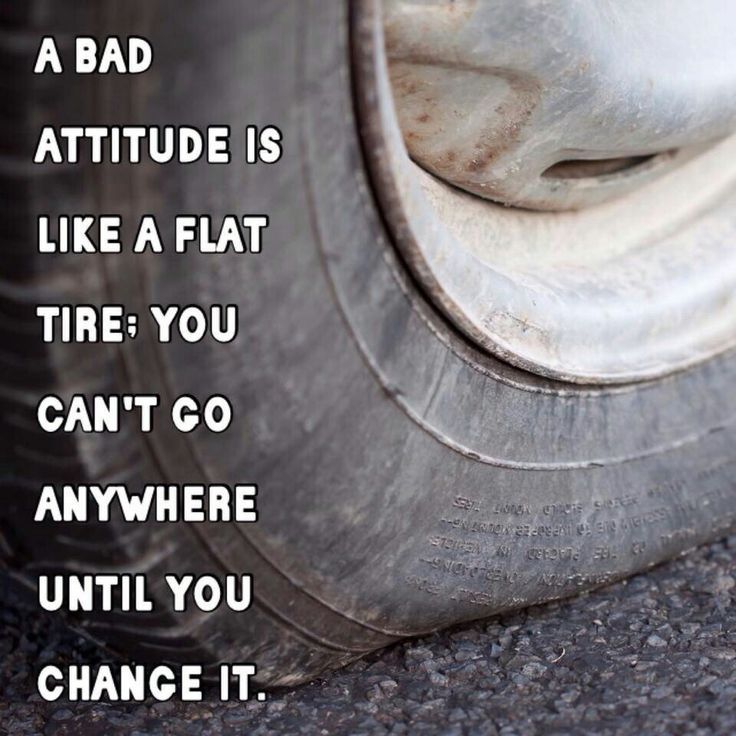
If you have run-flat tires, that won’t be an issue, but assuming you don’t — drive at a low speed, maintain it, and don’t go past a few yards.
Photo credit: Toa55/Shutterstock
The absence of a spare wheel or a standard "roll-in" seriously complicates the situation. If the driver has the skills, you can put a temporary patch on the puncture, otherwise you will have to order a tow truck.
We recommend carrying a spare wheel, a repair kit for various occasions, the necessary tools, then you can get out of any traffic situation with dignity. If all this is not there, then you can drive on punched rubber a short distance to a service station or tire fitting. We are not talking about hundreds of kilometers of travel, we are talking about a short distance.
Leakage of air from a car tire can occur in different situations. At the same time, punching is not necessary, there are other unforeseen and unpleasant situations. Most common:
At the same time, punching is not necessary, there are other unforeseen and unpleasant situations. Most common:
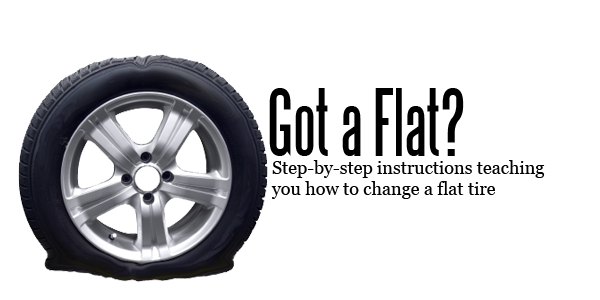
Potholes or bumps in the road can be a serious problem. Hitting such an obstacle at high speed can lead to deformation of the car disk, subsequently to damage to the rubber. Very serious damage, which is impossible to fix on your own, without the use of special equipment, you need to go to a tire service.
Use of used car tires - adhere to manufacturer's specified service life. Otherwise, the wheel may deflate due to high wear. There is a risk of explosion directly during operation.
Problems exist with tubeless tires - the fitting sometimes does not fit well on the disc, air leaks.
The main causes that lead to damage to car tires and air leakage are indicated. Whether it is possible to drive on a flat tire is determined by the driver himself, taking into account his experience and capabilities.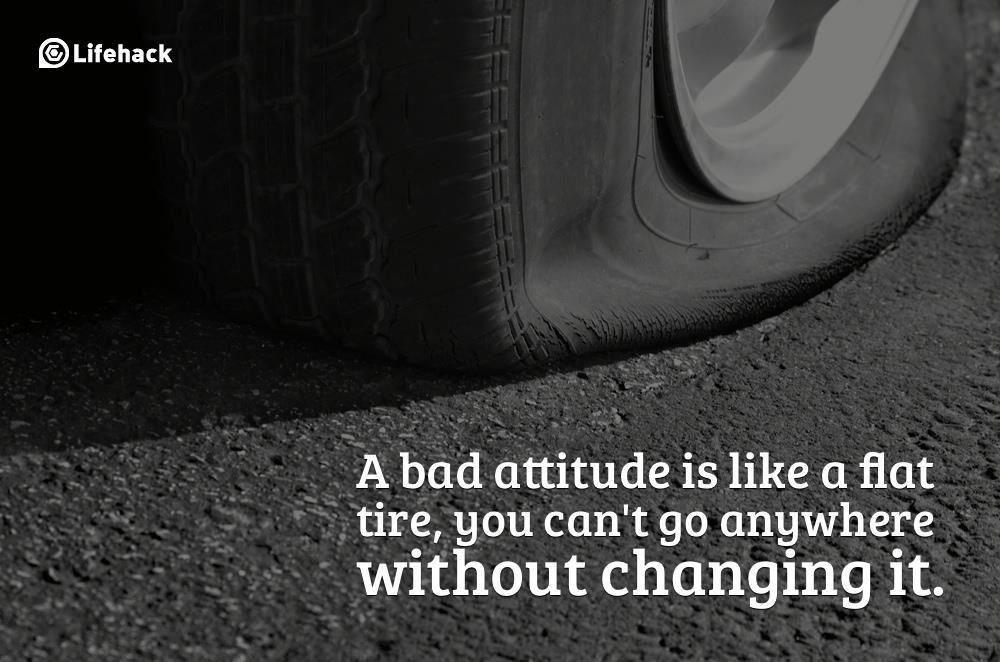
Driving with a flat tire is not recommended. Driving a car is significantly more difficult, there is a risk of getting into an accident, creating a threat to other road users.
Among the main problems that can lead to driving with low tire pressure are:

A flat tire is a serious hazard. Each driver must understand this and take all necessary measures to eliminate the problem. In no case should a puncture be ignored, at high speed the situation can completely get out of control. The ideal would be to replace the wheel with a spare, repair at the nearest tire shop.
A car tire is a complex system. Consists of different elements. Manufacturers use special technologies and materials to provide the declared driving characteristics of the car. The special pattern on the main part of the tire has its own functionality, and does not serve solely for beauty. Any deviation from the norm leads to a decrease in the functionality of the tire, respectively, the car loses its qualities. Its use becomes unsafe until the problem is solved.
Summer Drive Protection Sound Comfort
Rating:
4.5
Tires Goodyear Eagle F1 Asymmetric 3 SUV
Summer Drive protection
Rating:
4. 5
5
Tires Goodyear Eagle Sport TZ
Summer Drive protection
Rating:
4.5
Tires Goodyear EfficientGrip 2 SUV
Summer Drive Protection Run On Flat
Rating:
4.5
Tires Goodyear EfficientGrip Performance
Winter Drive protection
Tires Goodyear UltraGrip Arctic 2 SUV
Winter Drive Protection Sound Comfort
Rating:
4. 5
5
Tires Goodyear UltraGrip Ice 2
Winter Drive Protection Sound Comfort
Rating:
4.5
Tires Goodyear UltraGrip Ice SUV
Winter Drive protection
Tires Goodyear UltraGrip Performance+ SUV
All season Drive Protection
Rating:
5
Tires Goodyear Vector 4Seasons Gen-3 SUV
Summer Drive Protection Run On Flat
Rating:
4
Tires Goodyear Wrangler HP All Weather
All season Drive Protection
Rating:
4. 5
5
Tires Goodyear Vector 4Seasons
Summer
Rating:
4.5
Tires Goodyear Wrangler All-Terrain Adventure with Kevlar
Summer Drive Protection
Rating:
4.5
Tires Goodyear EfficientGrip SUV
Summer Drive Protection Run On Flat
Rating:
4
Tires Goodyear Eagle F1 Asymmetric SUV
It is worth noting that under no circumstances should you drive with a completely flat tire.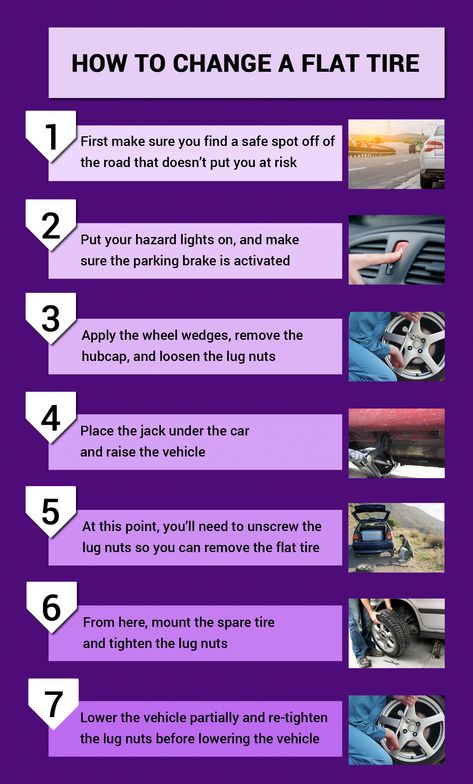 The situation can get out of control of the driver at any time, the tire will fly off the disk, he will receive damage that will lead to new problems. It's best to call a tow truck, no matter the cost.
The situation can get out of control of the driver at any time, the tire will fly off the disk, he will receive damage that will lead to new problems. It's best to call a tow truck, no matter the cost.
An exception to the rule may be a tire in which some air is still left. You can try to get to a service station or tire fitting. You can also try to inflate the tire to give yourself more time.
Low pressure driving is possible subject to the following rules:
The average distance allowed to drive with a half-flat tire is 10 kilometers. This is only allowed if the above rules are observed.
Delays in dealing with low tire pressure, punctures or other damage will result in negative consequences. There may be problems with the operation of the following systems:
There may be problems with the operation of the following systems:
A car with flat tires is a danger to other road users and its driving characteristics are affected.
It must be understood that movement with insufficient pressure leads to deformation of the rubber. You run the risk of completely damaging the tire, subsequently replacing it with a new one. Therefore, the decision to drive on half-flat tires must be made carefully, carefully evaluate all the consequences and alternatives.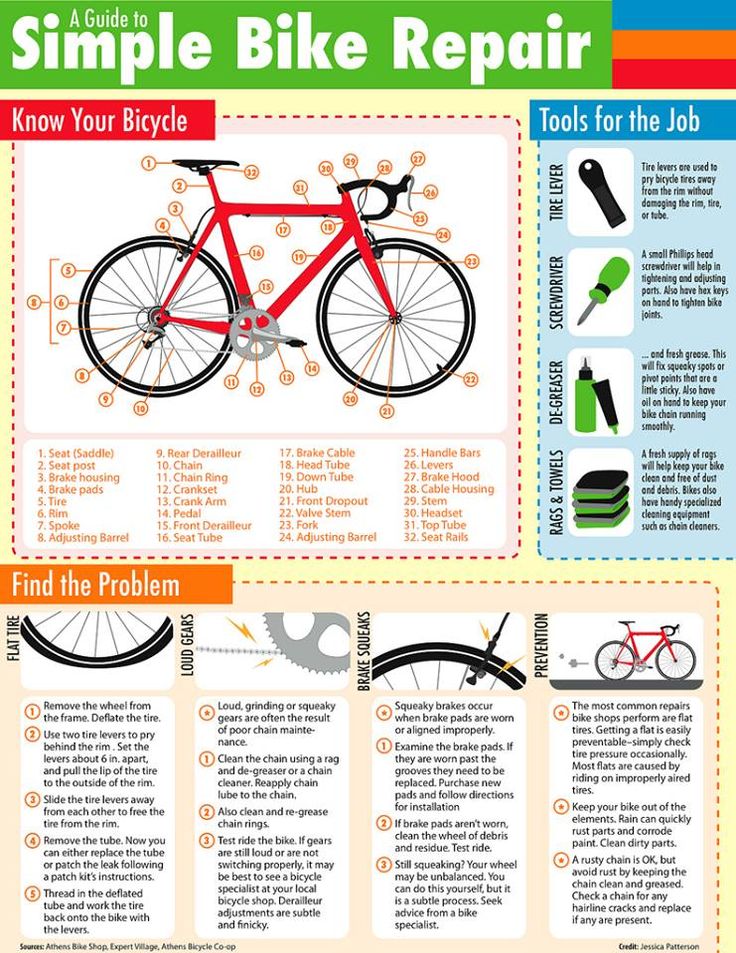 For example, estimate the cost of replacing, repairing other damage with the price of a tow truck or calling a mobile tire fitting team.
For example, estimate the cost of replacing, repairing other damage with the price of a tow truck or calling a mobile tire fitting team.
The maximum speed on a car with a half-flat tire depends solely on the characteristics of the tires, the type of vehicle, and other nuances. When accelerating to a speed of more than 30 km / h, complete disassembly is possible, the tire flies off the disk.
We recommend that you have a spare wheel with you, which is supplied with the car by the manufacturer, a repair kit. You will be able to revive the wheel for a while, it will not deflate and it will be possible to get to the tire fitting.
Vladimir Gavrilov
Estimated reading time: 4 minutes
17032
Category: Driving technique
If one wheel is punctured, most drivers immediately resolve this issue by installing a spare tire or "stowaway". But two or even three wheels cannot be replaced instantly. One spare tire is not enough, and you don’t want to mess with it. Many people simply take a compressor and pump air into the wheels, since a small hole lets in less air than the compressor drives inside the tires. In this case, you can increase the pressure to an acceptable level and get to the tire shop until the air is out.
But two or even three wheels cannot be replaced instantly. One spare tire is not enough, and you don’t want to mess with it. Many people simply take a compressor and pump air into the wheels, since a small hole lets in less air than the compressor drives inside the tires. In this case, you can increase the pressure to an acceptable level and get to the tire shop until the air is out.
But if the cord is cut, then the hole expands under the pressure of air, and then the tire does not hold pressure at all. The most desperate people roll to the workshop at their own peril and risk. What happens to rubber?
The tire quickly loses elasticity under cyclic loads that occur when driving with zero pressure. In fact, she finds herself between a hammer and an anvil. The disk pushes the rubber to the asphalt and cuts it. In addition, unforeseen loads occur in the horizontal plane, which are not present in an inflated wheel. The disc pulls out the rubber, the cord breaks, and with it the internal fibers of the material spread. As a result, the tire "chews".
As a result, the tire "chews".
If you remove it from the wheel and look inside, you will find black dust. It flies off the surface protective layer. If there is little dust, then the wheel still has a chance to live, and if it has dirty everything around, then most likely the tire will be sent for recycling. When the wheel is inflated, hernias, similar to blisters, come out in places of damage. And they can go in a chain, like bedbug bites. This tire is no longer usable. She was killed by a deflated voyage. Moreover, to damage the cord, it is enough to drive a couple of hundred meters.
In addition, if you drive on a flat tire and accelerate to 30-40 km / h, then an empty tire will simply fly off the disk and hit like a rag on the asphalt and sides of the car. Then there is a risk of scratching the paintwork and even crushing the metal of the body. In the worst case, the disc will bend or crack on bumps. Therefore, any movement is permissible only on inflated wheels, with the exception of specialized Run Flat tires with hard sidewalls. These wheels are able to roll fully flat for up to 80 km, but they can only be found on expensive premium cars.
These wheels are able to roll fully flat for up to 80 km, but they can only be found on expensive premium cars.
Usually, when passing obstacles on the road, experienced jeepers relieve the pressure in the wheels to 0.5 atm. This amount of air is enough to drive at low speed for a distance of several kilometers. However, you can’t go far like that, as the tire wears out quickly. Its side protector wears out.
Experienced drivers do not drive with punctures and try to detect a drop in pressure from the behavior of the car before the tire is completely flat. They run to the parts store for a repair kit, which includes flagella and a special awl for installation. With such a flagellum, you can plug a puncture and pump up the wheel to working pressure, and then go to the service. Flagella withstand a standard pressure of 2.2 atm.
If you cannot get a repair kit, then you can screw a thick self-tapping screw into the hole, which are used in everyday life for fastening wooden panels.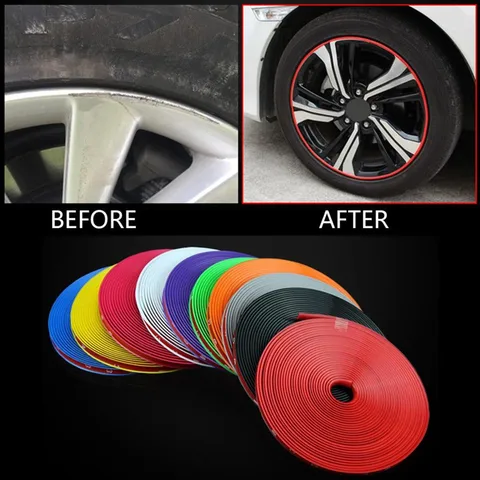 The self-tapping screw prevents air leakage and is able to hold out for a couple of days. With it you can drive more than one hundred kilometers. Well, it withstands pressure at the level of 1.5-1.9 atm.
The self-tapping screw prevents air leakage and is able to hold out for a couple of days. With it you can drive more than one hundred kilometers. Well, it withstands pressure at the level of 1.5-1.9 atm.
If, before installation, coat the self-tapping screw with sealant and pre-pump it into the puncture, then you can increase the pressure to 2.2 atm. In this state, the car will reach any tire fitting station.
safe drivingcar wheels
Next article
